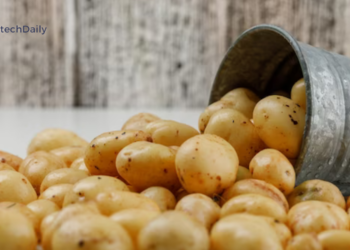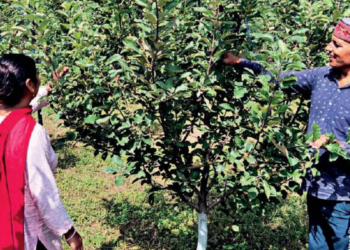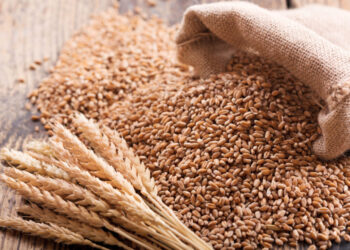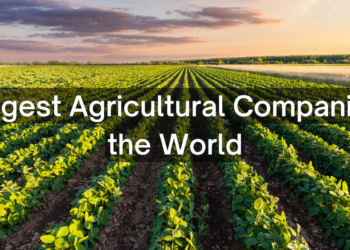Sustainable farming practices have emerged as the need of the hour in our quest for environmental conservation and food security. At the heart of this revolution lies the humble millet, a versatile and nutritious grain that has the potential to transform the landscape of agriculture. In this article, we will explore the profound impact of sustainable farming with millets, shedding light on their significance in mitigating various challenges faced by conventional agriculture. Millets are poised to be a game-changer in the agricultural world, offering a path towards environmental sustainability, improved food security, and healthier livelihoods.
The Significance of Sustainable Farming
Sustainable farming practices are those that aim to preserve and enhance the productivity of the land while minimizing negative environmental impacts. These practices align with the principles of conservation, adaptability, and stewardship, which are crucial for safeguarding the Earth’s resources. The adoption of sustainable farming practices is paramount for addressing the challenges posed by conventional agriculture, such as soil degradation, water depletion, and chemical contamination.
In the context of sustainable farming, millets assume a pivotal role. These hardy, drought-resistant grains have a unique ability to thrive in various agro-climatic conditions, offering a lifeline for small-scale farmers. By cultivating millets, farmers can diversify their crops, reduce water consumption, and maintain soil health, thus promoting a sustainable approach to agriculture.
Millets: Nature and Importance

Millets are a group of small-seeded, annual grains belonging to several genera within the Poaceae family. Common types of millets include finger millet, pearl millet, foxtail millet, and sorghum. Historically, millets have been integral to the diets of various communities around the world, especially in regions with challenging growing conditions.
-
Nutritional Value and Health Benefits
Millets are nutritional powerhouses. They are rich in essential nutrients like fiber, vitamins, and minerals. These grains are gluten-free, making them an excellent choice for individuals with dietary restrictions. Additionally, millets have a low glycemic index, aiding in the management of blood sugar levels, and they have been linked to a reduced risk of chronic diseases, making them a valuable component of a balanced diet.
The Role of Millets in Sustainable Farming
-
Biodiversity and Crop Rotation
One of the cornerstones of sustainable farming is crop diversification and rotation, a practice that millets facilitate admirably. Millets can be grown alongside other crops, promoting biodiversity. Their small grains take up less space, allowing for intercropping and the preservation of vital ecosystems on farmlands. Furthermore, millets act as an effective break crop, disrupting the life cycles of pests and diseases and reducing the need for chemical interventions.
-
Low Resource Requirements
Millets are renowned for their ability to thrive with minimal inputs, making them a cost-effective and sustainable choice for farmers. These hardy grains require less water, fertilizer, and pesticides compared to many other staple crops. As water scarcity becomes an increasingly pressing global issue, millets offer a water-efficient alternative that can withstand dry conditions.
-
Pest and Disease Resistance
Millets possess natural defenses against pests and diseases, reducing the reliance on chemical treatments. Their resilience to various environmental stressors and pests makes them an attractive option for organic and sustainable farming. By cultivating millets, farmers can minimize their ecological footprint and reduce the harmful effects of synthetic chemicals on the environment.
-
Resilience to Climate Change
As climate change accelerates, the unpredictability of weather patterns and increased extreme weather events pose a significant threat to global agriculture. Millets exhibit remarkable resilience to climate variability. Their adaptability to adverse conditions, including drought and high temperatures, makes them a dependable source of food and income for farmers even in the face of climate-related challenges.
-
Soil Health and Carbon Sequestration
Maintaining soil health is a key aspect of sustainable farming. Millets contribute to soil health through their ability to fix atmospheric nitrogen, which can enhance soil fertility. Additionally, their deep root systems improve soil structure and promote carbon sequestration, mitigating greenhouse gas emissions and combating climate change.
Challenges and Barriers
While the potential benefits of millets in sustainable farming are clear, several challenges and barriers need to be addressed to encourage their widespread adoption.
-
Limited Awareness
One of the primary challenges is the lack of awareness among farmers, consumers, and policymakers regarding the benefits of millets. Many people are unfamiliar with these grains, and promoting their cultivation and consumption requires education and outreach efforts.
-
Market and Policy Barriers
In many regions, the market for millets is underdeveloped, with limited infrastructure and inadequate support from government policies. To harness the full potential of millets, there is a need for favorable policies, including price support, research and development, and marketing initiatives.
-
Agricultural Practices
Transitioning from conventional farming practices to sustainable millet-based farming can be challenging for farmers who are accustomed to specific methods and crop choices. Training and extension services can help bridge this knowledge gap.
Success Stories and Case Studies

Despite these challenges, there are numerous success stories and case studies that showcase the transformative power of millets in sustainable agriculture. These examples illustrate the positive impact of millet cultivation on farmers’ livelihoods and the environment.
-
The Millet Revolution in India
India, with its diverse agro-climatic zones, has been at the forefront of the millet revolution. In states like Karnataka and Telangana, farmers have embraced millet cultivation as a means of combating water scarcity and soil degradation. The Millet Mission in Karnataka has been instrumental in promoting millets and encouraging their integration into government programs and public distribution systems.
-
The African Millet Story
Across the African continent, millets have played a crucial role in ensuring food security, especially in regions prone to drought. Millet cultivation has empowered small-scale farmers, improved nutrition, and reduced dependence on food aid. Organizations like the African Union have recognized the potential of millets and are working to promote their cultivation and consumption.
-
Global Efforts and Initiatives
International organizations, such as the Food and Agriculture Organization (FAO) of the United Nations, have recognized the importance of millets in achieving sustainable development goals. They have initiated programs and partnerships to promote millet cultivation and raise awareness about the grain’s potential.
Future Prospects and Recommendations
The future of sustainable farming with millets is promising, provided that certain measures are taken to overcome existing challenges.
- Promoting Awareness
Education and awareness campaigns at the grassroots level are essential to inform farmers and consumers about the benefits of millets. These campaigns should emphasize the nutritional value of millets and their potential to combat climate change and water scarcity.
- Policy Support
Governments should actively support millet cultivation through policies that include price support, subsidies, and research and development. This can help create a conducive environment for farmers to transition to millet-based farming practices.
- Market Development
Efforts should be made to develop millet markets, establish supply chains, and create demand for millet products. Collaboration with the private sector and the food industry can play a significant role in this endeavor.
- Research and Extension Services
Investing in research and extension services is crucial to provide farmers with the knowledge and tools needed to transition to millet cultivation successfully. Training programs, technical support, and access to quality seeds are all essential components of this effort.
Conclusion
Sustainable farming with millets is more than just a trend; it is a vital step toward ensuring food security, protecting the environment, and improving the livelihoods of farmers. Millets, with their low resource requirements, pest resistance, and adaptability to climate change, have the potential to transform agriculture on a global scale. It is imperative that we embrace and promote the cultivation and consumption of millets as a sustainable solution to the challenges facing agriculture today. By doing so, we can nurture a greener tomorrow for generations to come, built on the resilience and nutritional value of these remarkable grains.













